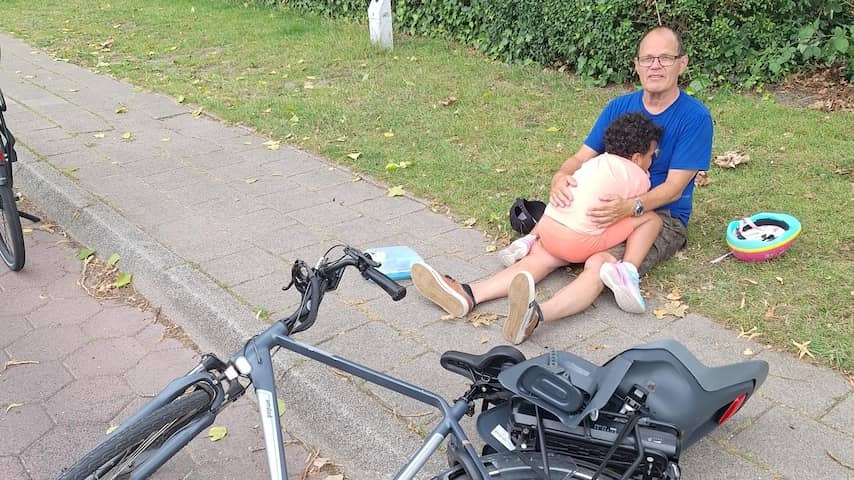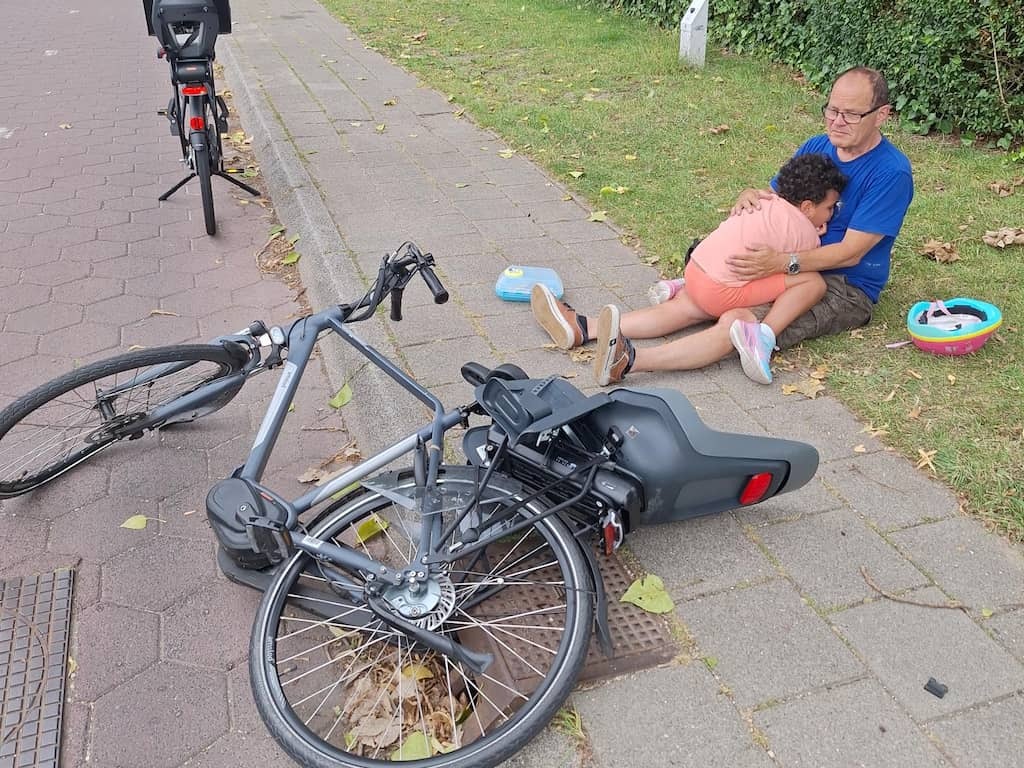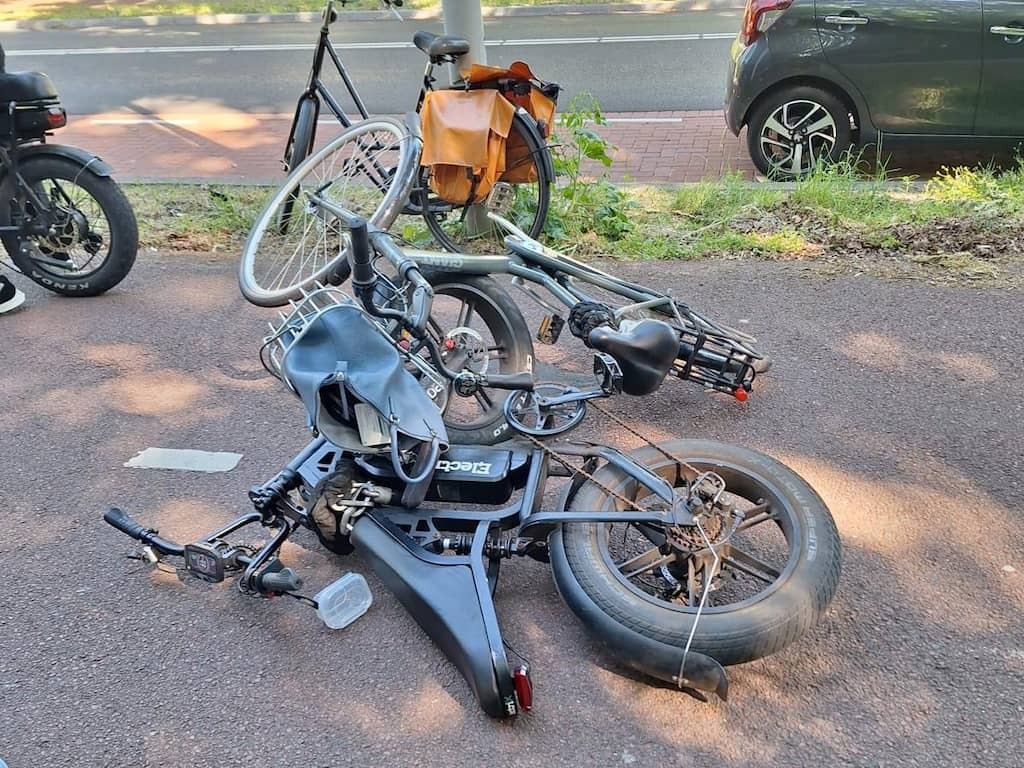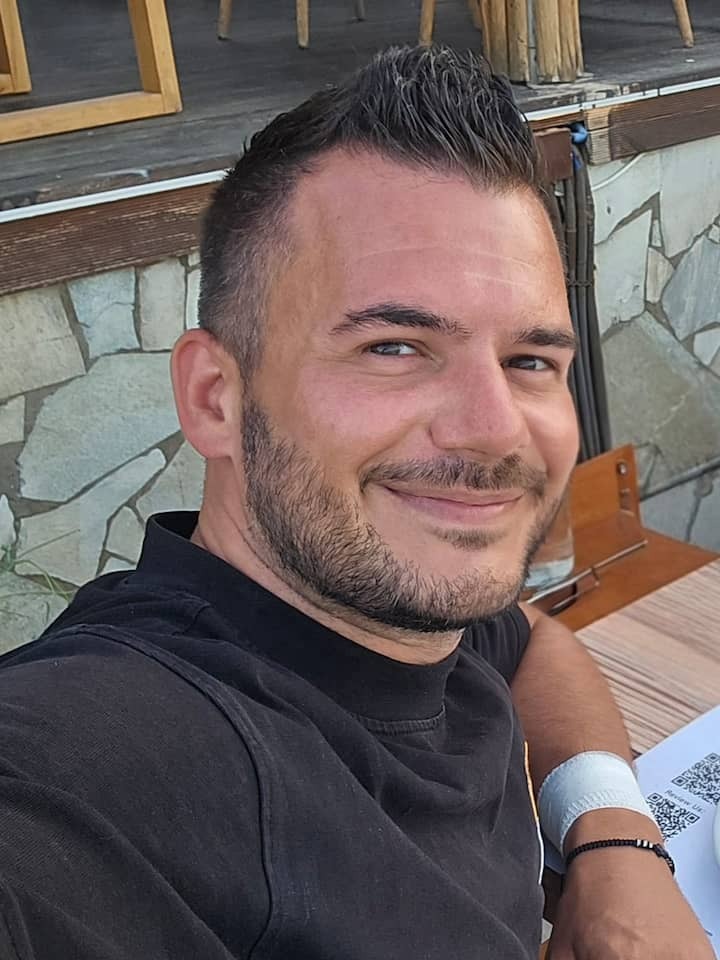
Traffic minister Robert Tieman wants minors on electric bicycles and Fatbikes to wear a helmet to improve road safety. The plan releases a lot, especially with the people who have been hit by someone on a fatbike in recent years. These are their stories.
With his five-year-old daughter Sophia on the back, Ton de Gier (69) cycles through the South Holland Wateringen in July. They are on their way to eat an ice cream. On the cycle path he sees boys about eighteen on a scooter and a fatbike approaching them.
“They don’t pay attention, drove fast and were mainly busy with each other,” says Ton. Things go wrong in a bend. The scooter and fatbike hook together and the boys lose control. There is still braking, but the Fatbike touches Ton and his daughter’s bike, which means they fall hard. Sophia shoots from her child’s seat. “Fortunately she had a helmet on.”
The police arrive on the spot and the ambulance is being called. Sophia is being investigated. The boys are shocked, Ton sees. “But given their age, they were difficult to give themselves an attitude.” He thinks that the young people had too little time due to their speed and inattention. “At such a young age it is still difficult to estimate and anticipate traffic situations.”
Ton is not against Fatbikes. “I wish everyone, but he goes too fast for such a young age,” he says. The helmet obligation will mainly help the Fatbiker himself, he thinks. “That helmet does not so much help the other person in a traffic accident and does not solve the reckless driving behavior of young people.” He does think that it will help to raise awareness of the risks of a fatbike.
Ton is now considering buying a helmet himself. “I got rid of it well and the helmet has protected Sophia well. But of course it is a bit strange that I have to protect myself against what comes to me.”
The Amsterdam Henrike Ruijsenberg (54) cycles home from her work in May when she is overtaken by a boy on a fatbike. “I think he wanted to catch up soon for the next oncoming car.” But the boy cycles too close to her, touches her handlebars and pulls her with her. She flies over the bikes and ends up on the cycle path. “If he had waited ten seconds, he could have passed safely.”
Henrike immediately feels that her foot is not in the right place and is taken to the hospital by a bystander. Her foot appears to be broken in three places. Bystanders take care of the boy, who has little to no injuries, and note his data.
Henrike remembers that the Fatbiker was timid and asked her if it was. “I still thought: at least this is not such a kicked person, although he raced recklessly through the traffic. Three days later I thought differently.”
Because if she calls him to arrange insurance matters, the number is not in use. The boy also appears to have passed on a different name: that of a high school teacher.
According to the police, Henrike can’t do much about it. The medical costs are for herself. She still feels the impact of the accident every day. “We are three months further and I can do no further than a few hundred meters.”
Henrike does not think that a helmet obligation could have prevented her accident. “But I hope that the Fatbike will become less attractive for young people. I have nothing against the Fatbike, but against reckless behavior.”
Wesley Verheijden (37) is in the car in Geleen with his eleven -year -old son last Monday afternoon. When they cross a intersection, a fifteen -year -old on a fatbike runs against them from the right. “He arrived very fast and could not stop on time,” says Wesley. A hard blow follows.
The Fatbiker is light in shock, Wesley notes. He has a lot of scrapes and his left elbow is bleeding a lot. Wesley provides him first aid and binds the wound. He and his son himself get rid of it relatively well. Their car is considerably damaged.
The police report shows that the boy has driven faster than 25 kilometers per hour. What Wesley finds remarkable is that the police will not seize the Fatbike, despite the suspicion that he was driving faster than allowed.
As far as Wesley is concerned, the helmet obligation should have been introduced much earlier. And even for all cyclists. “In many European countries it is already mandatory. In the Netherlands, where we have a lot of cyclists, we are really behind. Especially when you hear that young people are suffering from brain damage due to an accident with a fatbike.”
“Children have little experience in traffic and often do not know all traffic rules,” he explains. “They cannot yet properly estimate their own speed or that of others. But I also think there is a responsibility with parents to let children go on the road safely.”
Wesley has engaged Victim Support for his son. “He was on the passenger side, where the blow was. I don’t want him to have anything left.”
Traffic Minister Robert Tieman Wants Minors on Electric Bicycles and Fat Bikes to Be Required to Wear A Helmet In The Future To Improve Traffic Safety. The plan is causing a stir, eSpeciate among people who have bone hit by Someone on a fat bike in recent years. These are their stories.
With his five-year-old daughter Sophia on the Back, Ton de Gier (69) Cycles Through Watering, South Holland in July. They are on their way to get an ice cream. On the Bicycle Path, He sees boys of about Eighteen Coming Towards them on a scooter and a fat bike.
“They are hurt paying ation, were Driving Fast, and Were Mainly Occupied With Each Other,” Says Ton. Things Go Wrong in a Bend. The Scooter and Fat Bike Hook Into Each Other and the Boys Lose Control. They brake, but the fat bike hits ton and his daughter’s bicycle, causing them to fall hard. Sophia Shoots Out of Her Child Seat. “Fortunately, She was Wearing a Helmet.”
The Police Arrive on the scene and the ambulance is called. Sophia is examined. The Boys Are Shocked, Ton Sees. “But Given Their Age, they found it diffress to adopte an attitude.” He thinks the young people had Too Little Time to Adjust Due to Their Speed and Intentiveness. “At Such A Young Age, It is Difficult to Assess and Anticipate Traffic Sitations.”
Ton is not Against Fat Bikes. “I Grant it to Everyone, but it goo Fast for Such A Young Age,” He says. The Helmet Requirement Will Mainly Help the Fat Biker himself, He Thinks. “That Helmet Doesn’t SO Much Help the Other Person in a Traffic Accident and Doesn’t Solve The Recsy Driving Behavior of Young People Either.” However, he thinks it will help raise awareness of the risks of a fat bike.
Ton is now Considering Buying a Helmet himself. “I got off lightly and the helmet protected sophia well. But of course, it’s a bit strange that I have to protect myself against what’s coming at me.”

Henrike Ruijsenberg (54) From Amsterdam is Cycling Home from Work in May When She is overtaken by a boy on a fat bike. “I think he wanted to overtake quickly before the next oncoming traffic.” But the boy cycles too close to her, hits her handlebars, and pulls her along. She flies over the bicycles and ends up on the bicycle path. “If he had waited ten Seconds, he could have passed safely.”
Henrike Imediately Feels That Something Is Wrong With Her Foot And Is Tasks To The Hospital By A Bystop. Her Foot Turns Out To Be Broken in Three Places. Bystanders take care of the boy, who has few to no injuries, and note his details.
Henrike Remembers That The Fat Biker was Timid and Asked Her If She was Okay. “I thought: this is at least not such a cunning person, although he was racing reclessly through traffic. Three days later, I thought differently about that.”
Because when she calls him to arrange insurance matters, the number turns out not to be in use. The boy also appears to have given a different name: that of a teacher from a secondary school.
Accordance to the Police, there is not much Henrike can do about it. The Medical Costs Are for Herself. She Still Feels the Impact of the Accident Every Day. “We are Three months Further and I Cannot Walk Further than a few hundreds meters.”
Henrike Does Not Think That a Helmet Requirement Could Have Prevented Her Accident. “But I do hope that the fat bike will Become less attractive to Young People as a result. I have nothing bike, but i do have some something deckless behavior.”

Wesley Verheijden (37) was in The Car with his eleven-year-old son in Geleen Last Monday Afternoon. When they cross an intersection, a fifteen-year-old on a fat bike drives into them from the right. “He was Driving Very Fast and Couldn’t Stop in Time,” Says Wesley. A Loud Bang Follows.
The Fat Biker is Slightly in Shock, Wesley Notices. He has been a brasions and his left elbow is bleeding heavy. Wesley Provides Him With First Aid and Bandages The Wound. He and his son get off relatively well themelves. Their Car is Badly Damaged, Thought.
The Police Report shows that the boy was Driving Faster than 25 kilometers per hour. What Wesley Finds Remarkable is that the police do not confiscate the fat bike, despite the suspicion that he was driving faster than allowed.
As Far As Wesley is Concerned, The Helmet Requirement Should Have Been Introduced Much Earlier. And just for all cyclists. “In Many European Countries It is Already Mandatory. In that respect, We are really behind in the Netherlands, where we have a lot of cyclists. Especiate when you hear that young people suffer brain damage from an accident with a fat bike.”
“Children Have Little Experience in Traffic And often Do Not Know All The Traffic Rules,” He explains. “They Cannot Properly Estimate Their Own Speed or That of Others. But I also Think That Is A Responsibility for Parents to Let Children Go On The Road Safely.”
Wesley Has Called in Victim Support for his son. “He was on the passer side, where the impact was. I don’t want to be left with anything from it.”
